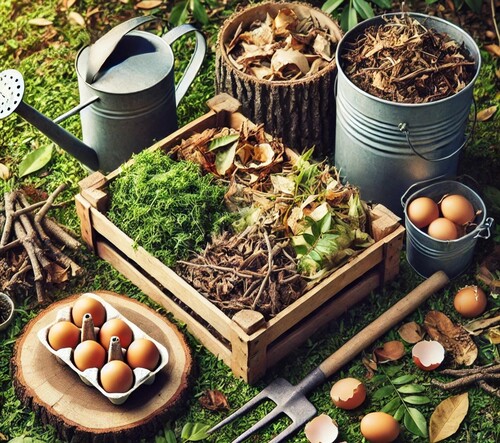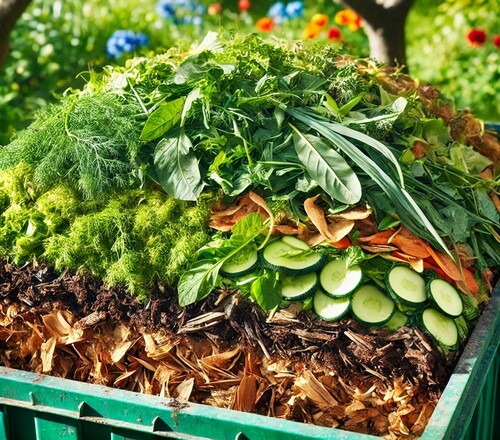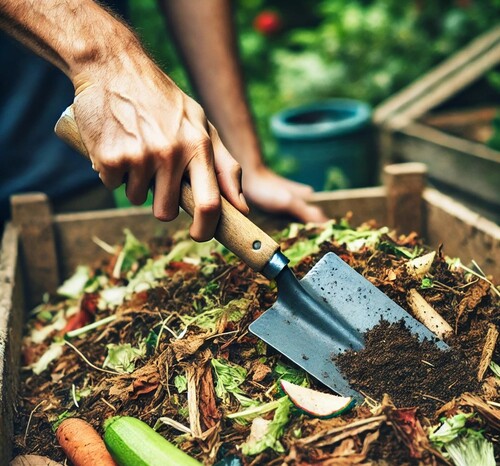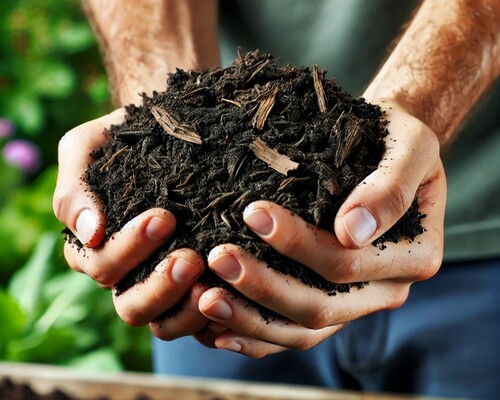Composting for Beginners: A Step-by-Step Guide
Introduction
Are you looking to reduce waste, improve your garden, and contribute to a healthier environment? Composting might be the perfect solution for you. This comprehensive guide will walk you through the basics of composting, helping you start your journey toward creating nutrient-rich soil for your plants while reducing your carbon footprint.
Why Start Composting
Composting is a natural process that transforms organic waste into a valuable resource for your garden. For beginners, the benefits of composting are numerous and impactful:
- Waste Reduction: Composting can divert up to 30 percent of household waste from landfills, reducing methane emissions.
- Soil Improvement: Compost enriches soil structure, enhances water retention, and provides essential nutrients for plants.
- Cost Savings: By creating your own compost, you’ll spend less on commercial fertilizers and soil amendments.
- Environmental Impact: Composting reduces the need for chemical fertilizers and helps sequester carbon in the soil.
- Educational Value: It’s a great way to teach children about recycling and natural cycles.
With these benefits in mind, let’s dive into how you can start your composting journey.
Getting Started

Essential Composting Materials Including Grass clippings, Dry Leaves, and Wood Chips
Choosing Your Composting Method
There are several composting methods to choose from, each with its own advantages. Here are two popular options for beginners:
- Traditional Composting: This method involves creating a pile or using a bin outdoors. It’s ideal for those with yard space and a mix of kitchen and garden waste.
- Vermicomposting: This indoor method uses worms to break down organic matter. It’s perfect for apartment dwellers or those with limited outdoor space.
For this guide, we’ll focus on traditional composting, as it’s the most versatile method for beginners.
What to Compost
Understanding what materials can be composted is crucial for success. Here’s a list of common compostable materials:
Green Materials (Nitrogen-rich):
- Fruit and vegetable scraps
- Coffee grounds and tea bags
- Fresh grass clippings
- Plant trimmings
Brown Materials (Carbon-rich):
- Dry leaves
- Straw or hay
- Shredded paper or carboard
- Wood chips or sawdust
Avoid Composting:
- Meat, fish, or dairy products
- Diseased plants
- Pet waste
- Chemically treated wood
Step-by-Step Guide to Building Your First Compost Pile

Proper Composting Layers with Green Material Balanced with Brown Material
Site Selection
Choosing the right location for the compost pile is crucial. Consider these factors:
- Convenience: Place it close enough to your kitchen for easy access.
- Sun Exposure: A partially shaded area is ideal to maintain moisture.
- Drainage: Ensure good drainage to prevent waterlogging.
- Size: Allow for a space of at least 3×3 feet.
Layering Materials
Creating a successful compost pile is all about balance. Follow these steps:
- Start with a layer of brown materials (4-6 inches deep) for good aeration.
- Add a layer of green materials (2-3 inches).
- Sprinkle some soil or finished compost to introduce beneficial microorganisms.
- Repeat these layers until your pile is about three feet high.
- Water the pile until it’s moist but not soaking wet.
Aim for a ratio of about three parts brown to one part green materials by volume.
Maintenance Tips
Proper maintenance ensures your compost decomposes efficiently :
- Turning: Mix your pile every 1-2 weeks to aerate it and distribute moisture.
- Moisture: Keep the pile as moist as a wrung-out sponge. Add water if it’s too dry, or dry materials if it’s too wet.
- Temperature: A well-functioning pile should feel warm to the touch. Use a compost thermometer for precise monitoring.
- Size: Maintain a minimum size of 3x3x3 feet to ensure proper heat retention.
Troubleshooting:
- If the pile smells bad, it may be too wet or lack oxygen. Turn it and add dry brown materials.
- If decomposition is slow, check moisture levels and ensure a proper green-to-brown ratio.
Common Mistakes to Avoid

A Trowel Being Used to Dig into a Compost Pile
Pitfalls and Solutions
Even experienced composters can encounter issues. Here are some common problems and how to solve them:
1. Bad Odors:
- Cause: Too much moisture or green material.
- Solution: Add brown materials and turn the pile.
2. Slow Decomposition:
- Cause: Lack of nitrogen or moisture.
- Solution: Add green materials and water if necessary.
3. Attracting Pests:
- Cause: Improper food scrap burial or meat/dairy inclusion.
- Solution: Bury food scraps in the center of the pile and avoid composting animal products.
4. Pile Not Heating Up:
- Cause: Pile too small or incorrect green-to-brown ratio.
- Solution: Increase pile size or adjust material ratio.
By avoiding these common mistakes, you’ll be well on your way to creating rich, healthy compost for your garden.
Conclusion

A Person Holds Up Rich, Finished Compost
Composting is a rewarding practice that benefits your garden and the environment. By following this guide, you’re now equipped with the knowledge to start your composting journey. Remember, composting is a process of continuous learning and adjustment. Don’t be afraid to experiment and find what works best for your specific situation.
As you embark on your composting adventure, keep in mind that patience is key. It may take several months to a year for your first batch of compost to fully mature. But the wait is worth it when you see the rich, dark humus you’ve created from what would have been waste.
For more advanced composting techniques or professional advice on integrating compost into your overall landscaping strategy, don’t hesitate to reach out to the experts. Contact Arborist Now today for personalized guidance on composting and other sustainable gardening practices!


